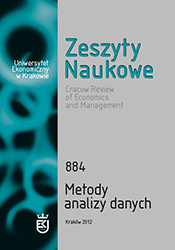Projekcje struktury ludności w Polsce w latach 2002–2052 według wykształcenia jako kluczowego czynnika kapitału ludzkiego
Projections of the Population Structure in Poland in 2002–2052 by Education as a Key Factor of Human Capital
Author(s): Marcin StonawskiSubject(s): Economy
Published by: Wydawnictwo Uniwersytetu Ekonomicznego w Krakowie
Keywords: human capital; education; population projections; Poland
Summary/Abstract: Human capital is one of the most important resources that affect both the level and quality of standard of living. According to the progenitors of the theory of human capital, formal education is a key factor in human capital. The aim of the study is to estimate population structure by education in Poland in the years 2002–2052 – when an intensive demographic change is anticipated. To this end, we use the multi-state demographic projection method for estimating population by age, sex and education. Our results suggest that the level of education of Poland’s population will rise as young, better educated cohorts replace the generations working now. Thus an increase in the human capital of individuals on the labour market will occur. Negative consequences of demographic change are also expected. For example, there will be a decrease in the size of the working population as it ages, which will have a negative impact on aggregated human capital in Poland.
Journal: Zeszyty Naukowe Uniwersytetu Ekonomicznego w Krakowie
- Issue Year: 884/2012
- Issue No: 08
- Page Range: 87-101
- Page Count: 15
- Language: Polish

